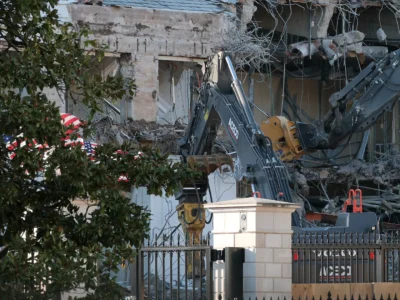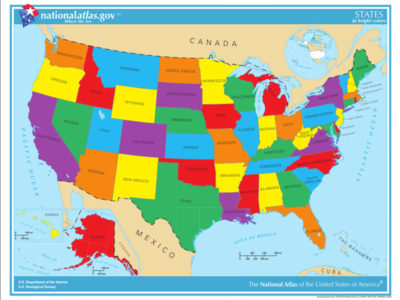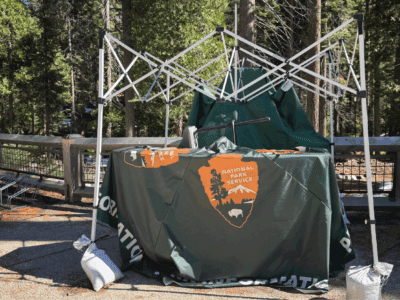The Assault on NEPA: A Threat Assessment
NEPA is under multiple attacks. Which are the most serious?
After spending decades in the shadows, NEPA – the statute governing environmental impact statements — has become a hot topic. And not in a good way: it is under concerted assault from Congress, the White House, and the Supreme Court. As we will see, the Supreme Court’s recent decision in the Seven County Infrastructure Case is probably the biggest problem. Notably, the debate over NEPA has taken place without much hard data about its effectiveness or costs, so everyone seems free to make their own assumptions.
What do we know about NEPA’s costs and benefits? Less than you might think, given that the statute has been in effect for over 50 years. It’s very hard to measure the effectiveness in NEPA, in terms of how much environmental harm it has avoided. Some of the effects are invisible, in terms of projects that are never even proposed or are proposed in substantially modified form because of the need to disclose environmental consequences. We know that very few projects have ever been permanently halted by injunctions, but that some have been abandoned after NEPA litigation. (We also don’t know much about the accuracy of the predictions made in environmental reviews, because there’s little follow-up after the project is approved). Costs are also unclear. Only a small number of projects require full-fledged impact statements, and many environmental reviews are completed fairly quickly. Some take a long time, however. But we don’t know whether the reviews are slowing down the permit process or whether they are taking longer because the permit process has been lengthy for other reasons. As I said, however, none of these uncertainties has stopped everyone from having fierce opinions.
How serious are the threats from the White House? The Trump Administration has made lots of efforts to drastically short-circuit the review process. Those are probably less threatening than they might seem. Trump eliminated the regulations that a White House Office, CEQ, had issued for over forty years. Court had given a lot of deference to those regulations, so abandoning them meant giving up an important tool for influencing the Courts. The substitutes — executive orders from the White House and regulations from individual agencies — won’t get judicial deference.
What about Congress? Congress passed a big overhaul of NEPA a couple of years ago, and the recent Reconciliation Act allows some companies to speed up the review process dramatically. But neither of these legislative actions changed the substance of NEPA: what environmental effects and project alternatives need to be discussed. Congress did increase the number of smaller and more routine projects that can escape review entirely, but that hasn’t been where the big controversy has been. In the end, while these various measures might or might not be good ideas, they are more aimed at streamlined procedures than at limiting consideration of environmental impacts.
What about the Supreme Court? The Supreme Court’s recent decision in Seven Counties stands out for two reasons. First, it tells courts to use a light touch in NEPA cases and to avoid second-guessing agency experts. And second, it truncates what kinds of environmental effects need to be considered in cases, at least where those effects turn on later actions by other regulators. Read broadly, the case could go far to make NEPA a dead letter. But the opinion is sloppily written and leaves room for interpretation. And NEPA has suffered an uninterrupted string of defeats in the Supreme Court since the 1970s, yet has managed to remain robust anyway.
Where to go from here. Faced by these attacks, the natural response of environmentalists is to go into all-out defensive mode. That’s tempered a little by the desire of many environmentalists to streamline permitting for clean energy projects. (Not that the Trump Administration is going to do much of that anyway.) It might be more useful, however, to take a deep breath, give some serious thought to what we really want NEPA to achieve, and work on getting there.
Reader Comments
3 Replies to “The Assault on NEPA: A Threat Assessment”
Comments are closed.







The new Section 112 of NEPA, “pay-to-play,” looks out of place because it is. It has nothing to do with NEPA’s purposes, goals, or intent. We should get nervous when government agencies talk about “streamlining.” It is often doublespeak for hurry up the process and deal with (or not) the problems later. Not to be too polyannaish, but for now we still have Section 102(2)(C) basically intact and Section 107(C) codifies public commenting. Of course, with this administration, Congress, and Supreme Court everything could change tomorrow.
If I was trying to explain to an alien from another planet (or a Republican) what NEPA is and what we want it to achieve, I would first introduce them to Lynton Keith Caldwell’s book “The National Environmental Policy Act, An Agenda for the Future,” 1998, Indiana University Press, Bloomington Indiana, 209 pages.
I am flumoxed by the lack of urgency by environmentalists and the states. I understand your take on trheats from the administration, but I am not aware of any challenges to CEQ’s interim final rule (unreasoned, wrong on CEQ authority, violates APA notice and comment, total dismissal of reliance interests, etc) or the agencies’ revised NEPA procedures (same). It seems like we should be targeting agencies stacking the deck against environmental review and public engagement in procedures that are likely to receive some form of deference in practice, especially because the Supreme Court is putting significant pressure on lower courts to use a light touch.
Why aren’t we fighting with the tools we have?